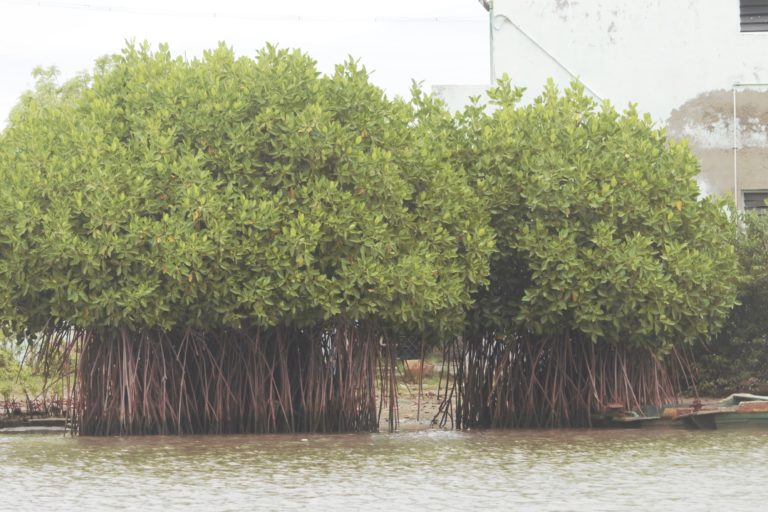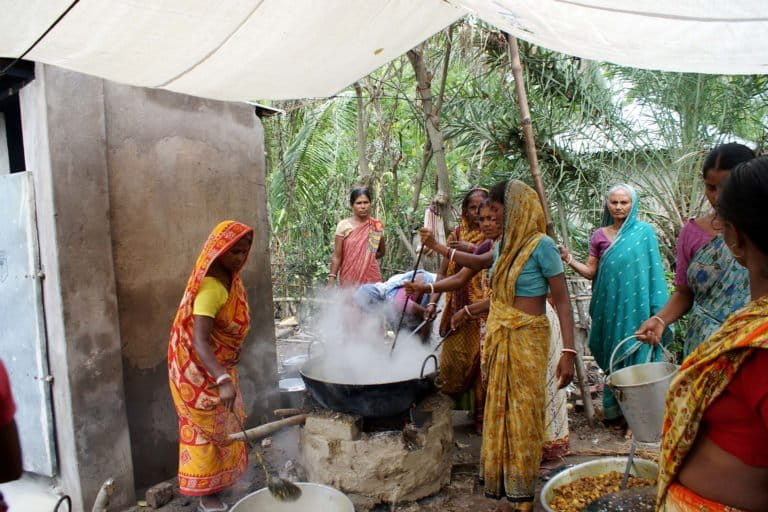- Environmental economist Saudamini Das says evidence-driven strategy of women’s representation in climate policies can prove effective in their empowerment.
- Talking about finance, Das also states that India needs to rigorously monitor and evaluate projects contributing to climate policy objectives to address concerns on proper use of climate finance.
- While India’s Energy Conservation (Amendment) Bill 2022, that seeks to set up a carbon credit market that is innovative, regulatory frameworks to keep a watch on carbon pricing, are imperative for its effective implementation in India, Das says.
“No one was willing to buy the argument that mangroves buffer against tsunami,” environmental economist Saudamini Das recalls the research and debate surrounding storm protection services of mangroves following the Indian Ocean tsunami in 2004 that devastated the southeast coast of India.
It was 2005 and Das, an Odisha-native teaching Economics in Delhi had just plunged into research, investigating storm protection offered by Odisha’s mangroves in the 1999 supercyclone. She was referring to a study published that year (2005) that showed coastal mangrove forests along India’s southeast coast, mitigated the impacts of the tsunami.
“There was a lot of criticism about the study. So, I thought let’s take this topic up,” says Das.
Research that drew attention to mangroves
Das used the data from several hundred villages to test the impact of mangroves on human deaths during the 1999 Odisha supercyclone. She combined economics with GIS (geographic information system) data.
Her research revealed that villages with a wider mangrove cover between them and the coast, experienced significantly fewer deaths than ones with narrower or no mangroves.
“Although our results suggest that mangroves saved fewer lives than the government’s early warning, we would not discount the role of mangroves as an adjunct to early warning systems. Despite being warned, much of the population in Orissa did not evacuate because of limited storm-shelter capacity, concern that deserted houses would be looted, and underestimation of the storm’s intensity. Mangroves helped save the lives of these people who stayed put,” Das and co-author Jeffrey R Vincent wrote in the paper published in 2009.

“The research became a global sensation; no one refuted that mangroves provide storm protection services. I travelled to 30 to 40 countries to deliver lectures and there was a lot of curiosity. The effort to have a robust dataset by travelling to villages paid off,” recalls Das in an interview with Mongabay-India, on the sidelines of a workshop on blue economy at Observer Research Foundation, which was conducted last month.
Building on her Ph.D. research, Das, continued to develop an expertise in coastal vulnerability analysis, understanding local factors contributing to resilience and the valuation of ecosystem services.
Now, with the Institute of Economic Growth, New Delhi, Das who works on climate change adaptation and evaluation of public policy, is foraying to investigate and quantify the contribution of climate adaptation projects in India to women’s empowerment.
‘Women are addressing complex realities of climate change’
“While evaluating the impacts of projects funded by the National Adaptation Fund for Climate Change and implemented by the National Bank for Agriculture and Rural Development (NABARD), I saw that women were very passionate about the work they were assigned as part of project committees –whether it was watershed management or raising a forest village. With a bit of handholding from the government through training, guidance and minimum provision of resources, women are addressing complex realities of climate change,” says Das.
Women’s participation in these projects was enabled by India’s climate change adaptation policy that mandated 33% women’s representation in project committees and also as beneficiaries. Das fondly remembers Bhagirathi Devi, the sarpanch (village chief) of Manar Tilla, a village in Uttarakhand. Revered as ‘Forest Mother’, Bhagirathi Devi mobilised women to restore a forest village and develop climate resilience.

“Wherever I travelled, I saw the qualitative evidence of women’s empowerment. But I did not have quantitative evidence. So, I am currently working out how these projects have increased women’s empowerment in a new study. I plan to do quantitative measurements. If we have evidence that 33% representation of women is leading to empowerment then similar clauses can be inserted into other projects and that can go a long way in empowering women and bringing qualitative changes in project outcomes,” explained Das.
In identifying the local factors of resilience during cyclones Hudhud and Phailin in Odisha, Das found that high education, the decision-making power of women, and the presence of coastline vegetation of local species such as cashew and palmyra helped the communities to build resilience toward cyclones.
She observes that women-headed households were also managing asset portfolios much better than households led by men. “As a result, they suffered less compared to men-headed households. They were poorer compared to the men-headed families, but the loss was much less. They maintained assets in such a way that they were able to bounce back from adversity,” said Das.
“Women are good money managers. When it comes to money management decisions we should listen to women,” she adds.
The need to strengthen monitoring and evaluation of projects
On analysing the effectiveness of climate policies including those that straddle mitigation and adaptation, Das notes that India still needs to strengthen monitoring and evaluation of projects contributing to climate policy objectives.
“So far, we are not rigorously monitoring the implementation of policies. When projects are running, things look well but after the project wraps, we do not know what happens. Monitoring and process evaluation are necessary even after the project concludes. We need to go for impact evaluations after a few years (following the termination of a project period).”
“Currently, questions are being asked on how well the funds, that governments of developing nations are raising for addressing climate change impacts, are being utilised. We need to address this because we are a resource-scarce economy and if we are spending money on a particular project, we need to see to it that we have permanent learnings,” she said.
According to Das, ‘unbiased evidence’ on project outcomes is crucial to work on the Indian government’s emphasis on evidenced-based policymaking. “It is equally important to know how carefully that evidence is being collected and who is collecting them. We need unbiased evidence because it is our future, and climate change is real. The return from every penny spent should not be zero.”
India’s extensive database such as those on damages from extreme weather events is robust compared to other developing countries which helps India’s case in accessing climate finance “because we know who to reach out to.” “Schemes such as the Jan Dhan Yojana, a financial inclusion programme, that links marginalised communities to India’s databases, help in understanding who we can reach out as beneficiaries in climate finance projects,” she states.

Calling the passing of the Energy Conservation (Amendment) Bill, 2022, which seeks to amend the Energy Conservation Act, 2001 as “innovative” for establishing a carbon trading scheme for the industrial sector, Saudamini Das says she is “eagerly and anxiously waiting to see the outcomes” because the success of the carbon trading scheme would depend on several factors.
“How well we make the carbon mandate operate… how well we frame regulatory mechanisms… how efficiently carbon prices are set in the country, so the market gets incentives to expand and also stabilise. The potential to set up a carbon credit system is large in India, but the pricing mechanism will play a big role in its successful implementation; we need to see how the prices are going to be received by the people who receive carbon credits and those who can’t meet the energy standards are going to compensate by buying the carbon credits,” she said.
The European Union’s Emissions Trading system, set up in 2005, has been the EU’s flagship initiative to reach its climate targets under the Kyoto Protocol; despite low prices the policy has been successful in reducing carbon dioxide emissions.
“We should not land up in a situation that Japan experienced where its carbon market (Japan Voluntary Emission Trading Scheme) collapsed. The (Indian) government needs to keep a watch on it (the market and pricing) but I can see a lot of positive things happening in the country because of the bill,” Das concludes.
Read more: Scientists raise caution as mangroves erode faster along the Bengal coastline
Banner image: Saudamini Das inspects mangrove plantation and fishery sites in Andhra Pradesh. Photo from Saudamini Das.
